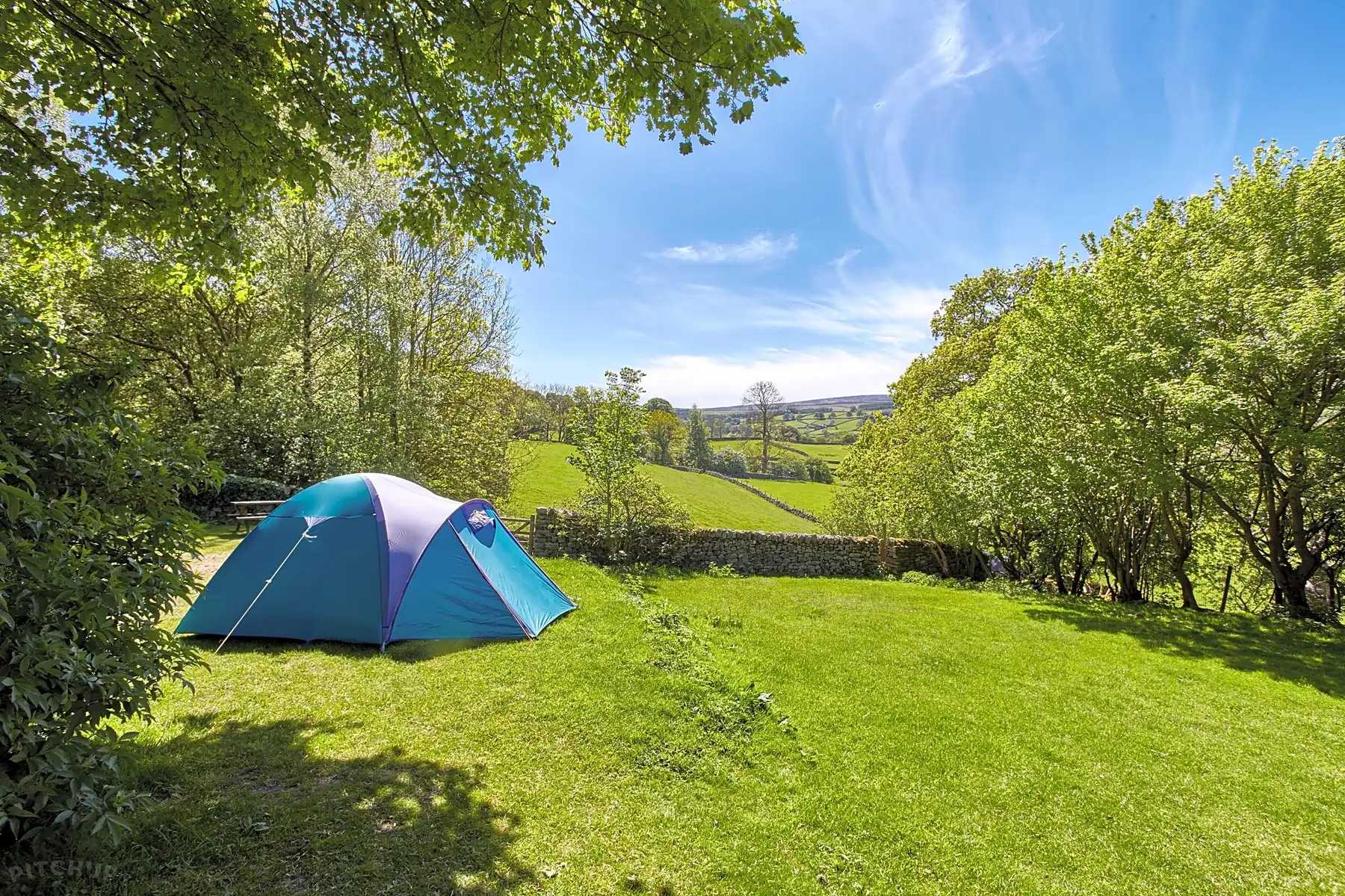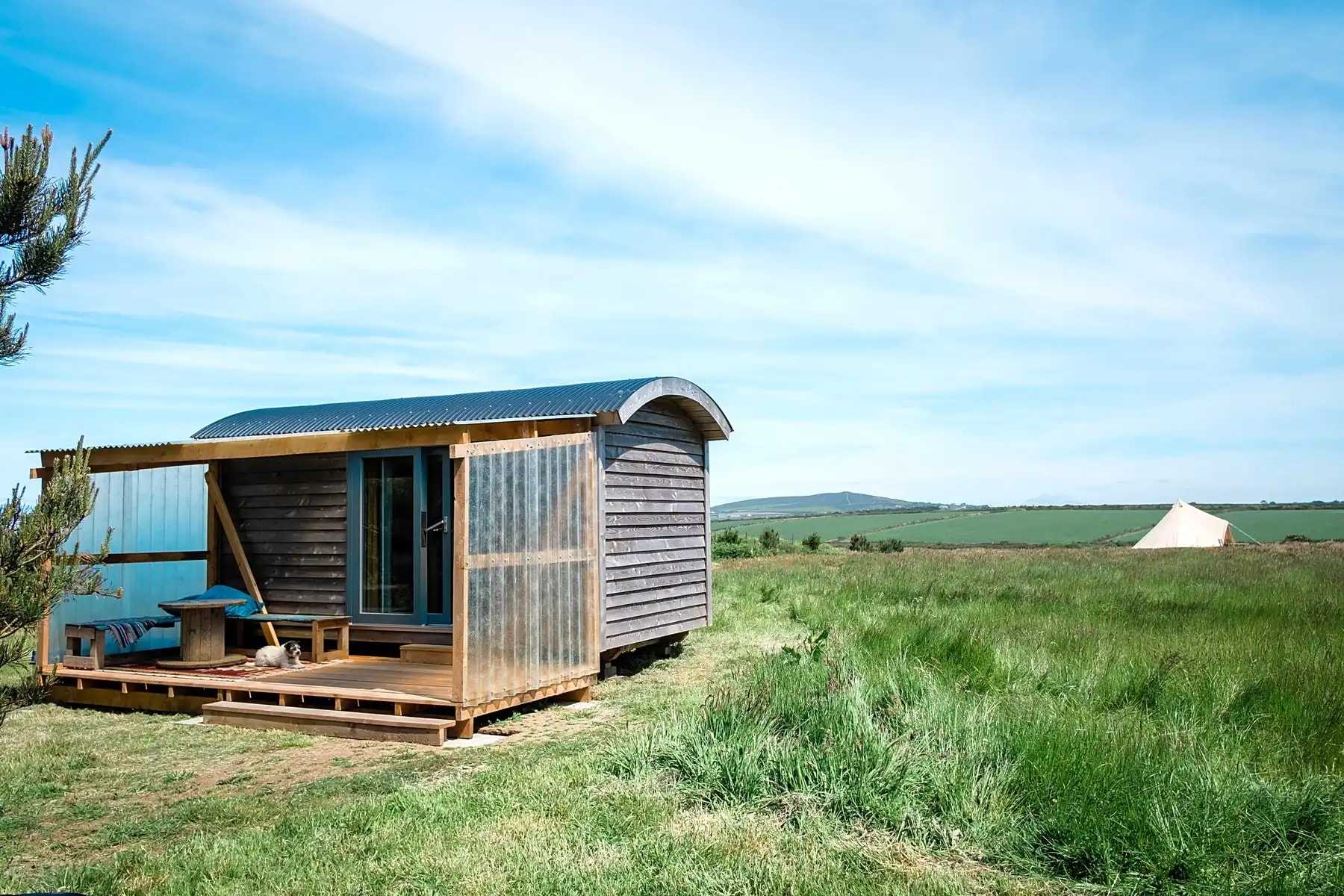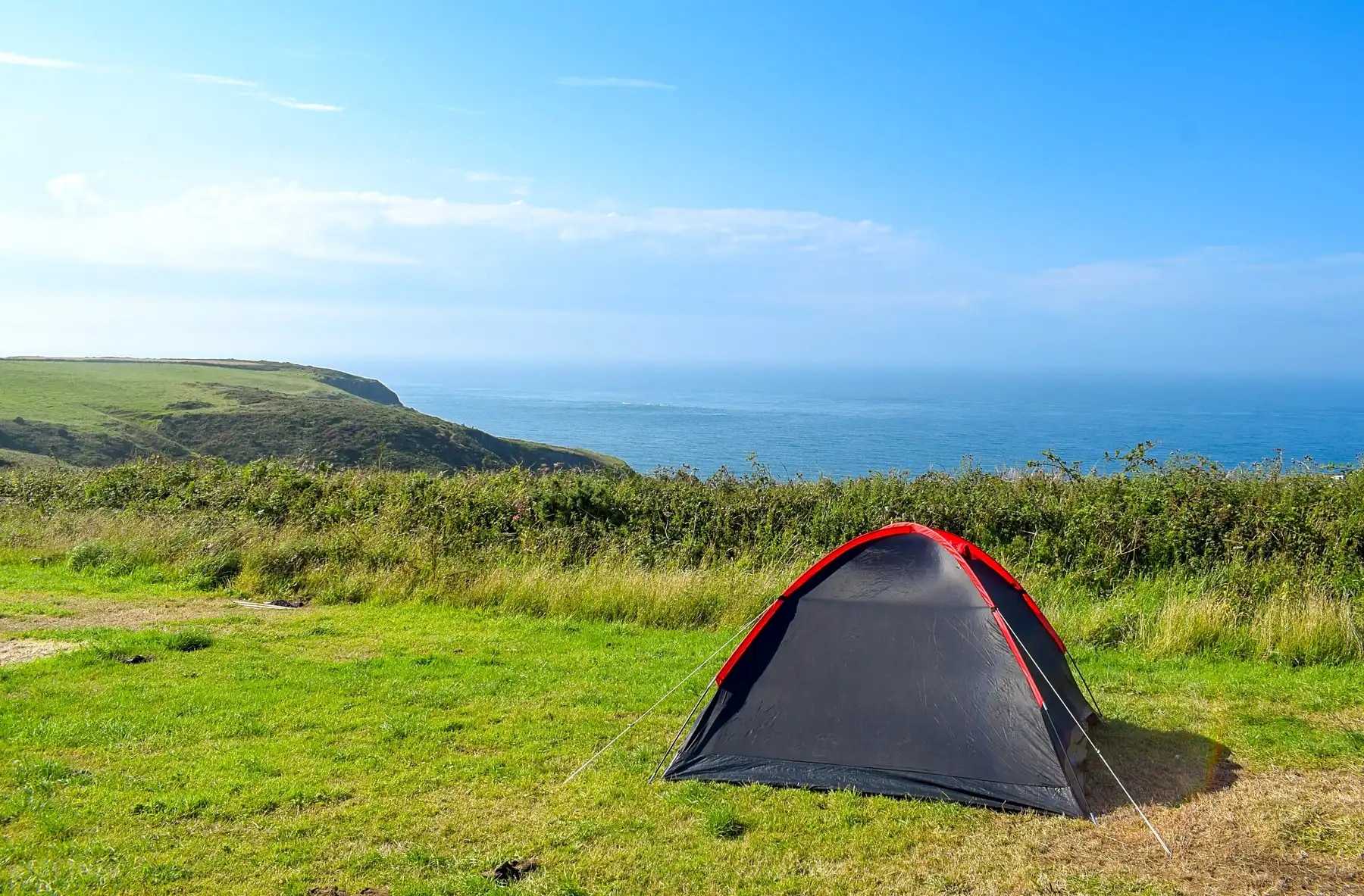How to write a campsite business plan

A good business plan is vital for any burgeoning company: it provides a template to guide you through each stage of starting, financing and managing your fledgling business. Use the writing of a business plan to help you work out the direction of your business, its ultimate aim and how to get there. A solid business plan will set you up for success, attract financing if needed and help you build a winning company.
But why choose a campsite business? Since the advent of the Covid 19 pandemic and the subsequent cost-of-living crisis, we have seen the number of staycations rise dramatically in this country. Recent data shows that this increase is not yet slowing down, as Pitchup bookings for the UK have tripled in the first quarter of 2023 when compared to the same period in 2019. As of May 2023, the site had 2,884 UK campsites listed for booking on its pages.
Financial constraints in these times of global recession, coupled with concerns over sustainability issues (Pitchup alone has sent over a million people on low-impact trips since lockdown up to 2022), make it additionally likely that camping businesses will continue to be successful, so the time is right to capitalise on the rise of camping holidays in the UK.
So back to the business plan. If, like most of us, you have limited knowledge on drafting a business plan, then we can help – just follow Pitchup’s simple and concise step-by-step guide to creating (and following) a successful and credible campsite business plan. Let’s get started.
Step one: Write an executive summary
Step two: Follow that up with a company overview
Step three: Show that you’ve done your market research
Step four: Expand on your company’s operational plans
Step five: Produce the all-important financial plan
Step six: Finally, attach support documentation in the appendix
Step one: Write an executive summary
First things first. You need to attract the attention of any potential investors (whether financial institutions, private investors or family and friends) from the outset, so write a concise and engaging summary of your business idea. Limit it to two pages.
Explain in a few sentences what you want to achieve, and follow that up with a few sentences on each component of your campsite business plan:
-
Give a brief overview of the campsite industry.
-
What is your aim? Are you a small start-up or are you considering a chain of campsites?
-
Detail your experience of running a campsite business (if any) or your relevant work background.
-
Give details of your target market.
-
Provide a written snapshot of your marketing strategy.
-
Are you a sole trader or part of a larger concern? If the latter, name-check any staff members and their relevant experience.
-
Name any direct local competitors.
-
Write a brief overview of your financial plan.
Although the executive summary will stand at the beginning of your business plan, ironically this may be the last section that you write, as it will be easier to summarise your information after you have written out each section in full.
Step two: Follow that up with a company overview

The second section of a successful campsite business plan is the company overview. Here’s your chance to introduce your particular camping concept, highlighting the type of campsite and campsite business you will be operating. An interesting overview will include:
-
Why you’re starting your campsite business.
-
What sort of business it is. Are you specialising in:
-
Basic pitches (providing little more than a field);
-
Seasonal camping, usually spring and summer only in the UK;
-
Year-round camping to bring in revenue all year);
-
A caravan park – either touring or static caravans, with or without full electric hook-ups, water and sewerage facilities.
-
What the time frame for start-up is.
-
Expand on any milestones that have already been achieved.
-
Highlight any potential services you will offer in the future.
-
Explain your legal position. For example, are you to be a sole trader, a limited private company or a public limited company (PLC).
Use this section of your campsite business plan to entice readers and investors in. This is your chance to make them believe in the future success of your campsite business.
Step three: Show that you’ve done your market research
To be credible to potential investors, it’s vital that you show you have done your research thoroughly and that you understand both the campsite industry in general and your niche/target market specifically. Pitchup can help you get started on your campsite marketing strategy.
- Research your competitors. This will help both you and your investors to see what other similar businesses are doing and where their strengths and weaknesses lie.
- What are their target markets? What sort of campsite business do they operate (for example, basic field camping or high-end glamping)? What is their pricing?
- To help you understand what is reasonable to charge for your campsite, Pitchup has come up with a pricing comparison report.
-
Research your customers and their expectations. Look at:
-
Their booking habits – when do they sit down to research their options?
-
When are people most likely to camp (school/public holidays or off-peak weekends)?
-
What is the average budget per customer locally?
-
What influences choice of campsite (location, price or services)?
-
What is the typical customer profile (family, friends, couples or solo travellers)?
-
What are the most searched-for services (catering, hot tubs or outdoor activities)?
- Completing your market research thoroughly will lead you to understand more about the industry, pick up on underlying trends and identify any potential gaps in the market. This should ultimately help you to decide on the type of outdoor accommodation to offer.
-
Useful online tools to help you analyse web traffic include Similarweb and Google Trends (for example, there are currently four times more searches for ‘camping’ as opposed to ‘glamping’).
-
Other suggestions include running a general Google search to see what is being said online about a specific company or topic, and doing a postcode search on Pitchup to see what site owners are doing locally.
- To help you understand why setting up a campsite is an excellent idea in today’s economic climate, we’ve gathered some facts and figures from the market:
-
Useful online tools to help you analyse web traffic include Similarweb and Google Trends (for example, there are currently four times more searches for ‘camping’ as opposed to ‘glamping’).
-
Outdoor accommodation is outperforming other holiday accommodation. While Airbnb, Expedia and Booking.com reported reductions in room nights sales in Q3 of 2021, Pitchup reported over 80% growth in campsite bookings.
-
The sector is worth over £40 billion worldwide, with the US share of the market being twice the size of Europe. Across the world, 1.2 billion nights are spent camping or caravanning each year, with 380 million of those nights spent in Europe (source: Eurostat, Outdoor Industry Association, Pitchup.com analysis).
-
Camping is by far the most sustainable sector in travel, driving down emissions per trip. Pitchup alone has sent over five million people on low-impact trips since lockdown in March 2020.
-
Outdoor accommodation is the most cost-effective choice when the UK is facing a cost-of-living crisis. According to VisitBritain, there were 13% more UK domestic trips during the 2009 recession than in 2007, which equated to nearly seven million more holidays. Budget travel was recently named in the top eight resilient sectors primed for recessionary growth by Crunchbase.
-
Step four: Expand on your company’s operational plans

You’ve nailed your strategy and marketing plan, so now it’s time to expand on how you’ll achieve your aim. This is where you lay out in considerable detail company objectives and goals, ongoing procedures and timelines. Elements to consider here include personnel, individual responsibilities, location, schedules and costs. Be realistic with figures, dates and what is attainable.
This section of the campsite business plan needs to answer the following questions your campsite business:
- Who will be in charge of specific tasks? Detail the attributes of your management team and workforce.
-
Who are your key employees?
-
What are their relevant qualifications or experience?
-
What will they bring to the future of your business?
-
- What is your timeline?
-
When will you be up and running, and how do you propose to get there?
-
- What is the operational structure?
-
What is each department responsible for?
-
How does this work day-to-day?
-
How will you monitor employee and management performance?
-
How will you reward them?
-
How will you let staff go if necessary?
-
- Where will you create your campsite business?
-
Describe the location and explain why it fits with your vision.
-
Attach a plan of the campsite to show its structure, size and location of any amenities (for example, communal barbecue, toilets, showers).
-
- What are the selling points of your site? Why do you think it will be successful? Some of the elements to discuss include:
-
Is there an area for parking cars?
-
Is it easy to access by car?
-
Is it near public transport?
-
Is it in a rural/quiet situation?
-
- What are the start-up and running costs?
-
Who are your suppliers?
-
Are they reputable and solvent?
-
Step five: Produce the all-important financial plan
It’s important to be able to show – both to yourself and any potential investors like banks or private individuals – that your campsite business is viable, stable and profitable. Writing a financial plan will clarify this.
So here’s where you lay out your strategy for the next five years. To convince anyone to back you, it’s vital to draw up a clear presentation that demonstrates your grasp of the financial situation. Use tables, charts and other visuals to make the information clear.
Include the following:
-
Projected revenue, along with a campsite-specific revenue estimator
-
Cost of goods or services
-
Total profit or loss (revenue minus cost of goods/services)
-
Operating costs (rent of land/services/personnel)
-
General expenses (marketing, advertising, camping/glamping unit depreciation)
-
Forecasted operating income statements (total profit minus expenses)
Tips for financing your campsite business
-
If you are in the position, use some of your own equity to finance your business, as this will help convince other financiers and other parties to invest.
-
Be firm when negotiating the terms and conditions of your financial backing. Repayment terms can be just as important as the package itself, and may well be flexible.
-
Determine whether other financing options exist. For example, you may be eligible for grant funding to support your campsite business. In England, the Rural England Prosperity Fund allocates funds to rural start-ups to help boost the local economies, and there are a number of other rural and agricultural grants available in the UK as a whole, and Scotland or Wales specifically.
-
You may be able to break even faster by utilising capital allowances to offset the cost of caravans, lodges, glamping units and other moveable structures let out for holiday use. Up to £1 million can be deducted under the annual investment allowance and a writing-down allowance may also be available.
Step six: Finally, attach support documentation in the appendix
The appendix of your business plan should include documents, charts, graphs or tables to supplement and support the marketing, operational and financial details outlined in previous sections of your business plan.
Include any other material that you feel will help your quest for investment, such as:
-
Images and illustrations (what will your campsite potentially look like? What will any camping or glamping pods look like?)
-
Personal references
-
Any licences, patents and trademark documentation
-
Agreements or contracts already in place with service providers
-
Marketing materials
-
CVs for each of management team members
-
Contact information for your accountant and solicitor
-
Your credit history
In conclusion, is it worth spending time to develop a campsite business plan?
Although it may seem an onerous task, there are myriad benefits to be had from taking the time to write an inspiring, clear and credible business plan. Doing so will help you better understand the camping industry, your competitors and your potential customers. A successful business plan will in turn help you to grow a successful campsite business.
It’s never too early to start marketing your campsite start-up. Give yourself a head start and list it on Pitchup.